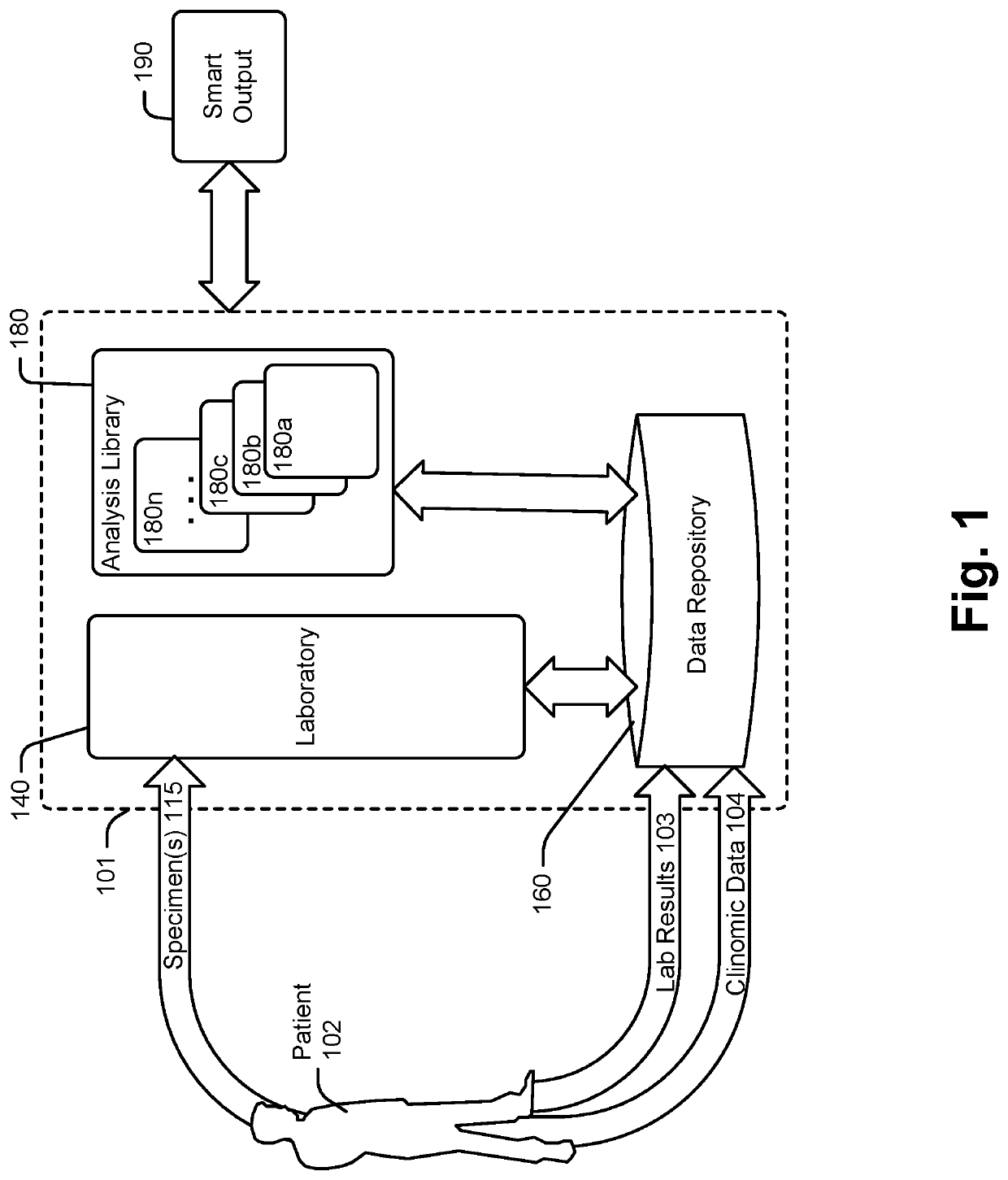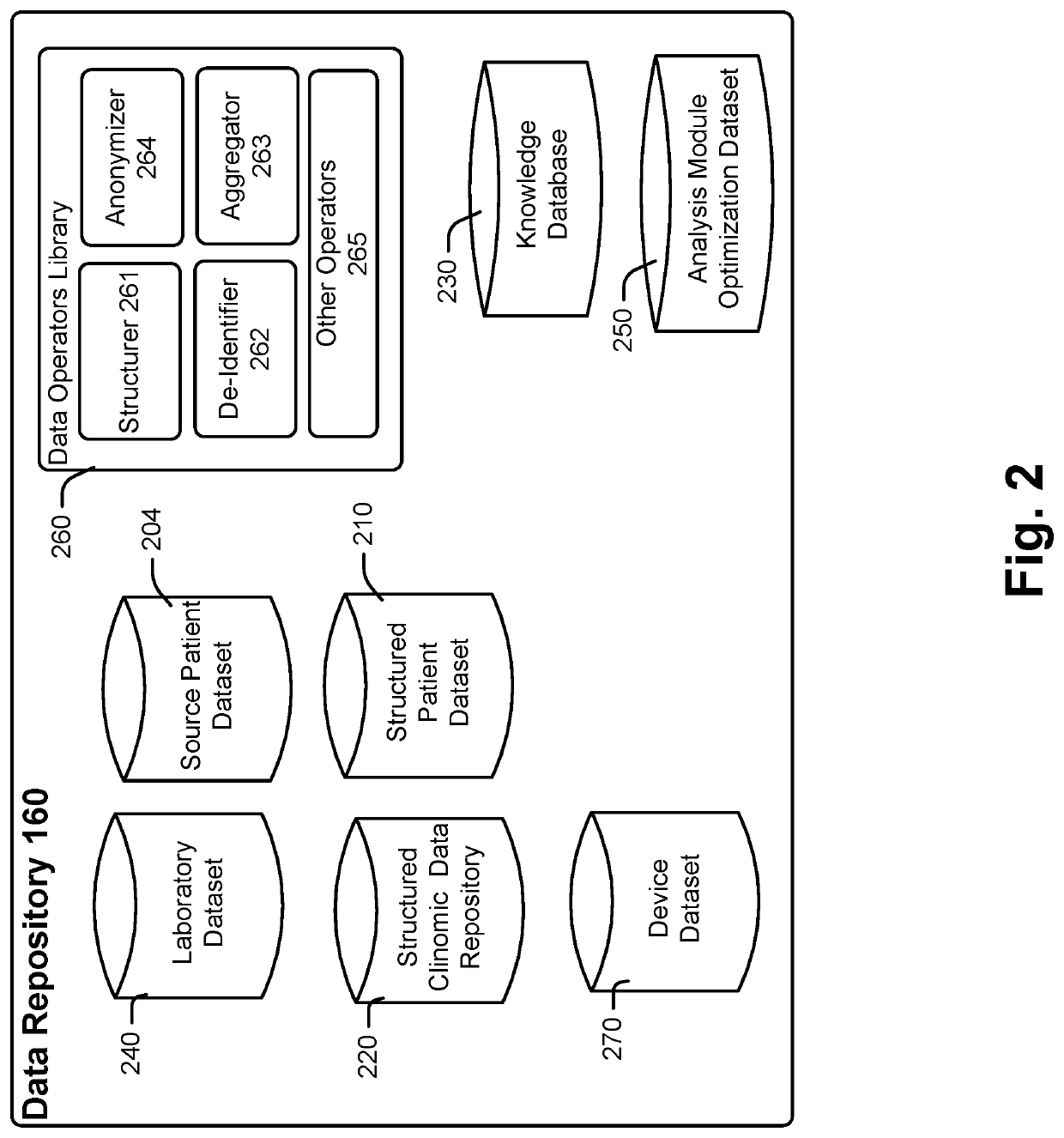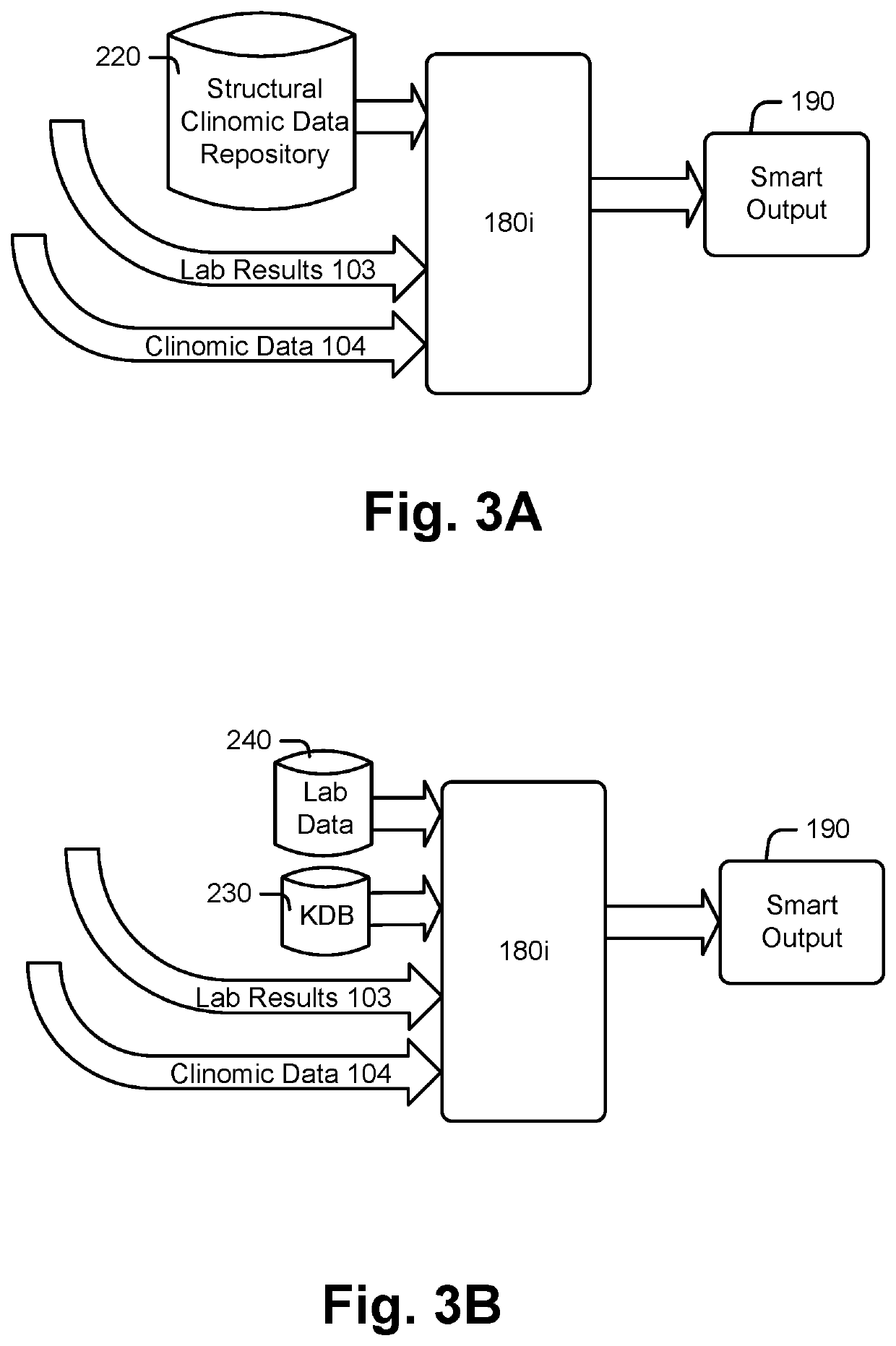Artificial intelligence assisted precision medicine enhancements to standardized laboratory diagnostic testing
a technology of artificial intelligence and laboratory diagnostic testing, applied in the field of personalizing diagnostic testing results, can solve the problems of not being enriched by other orthogonal data, a1c and many other lab tests not adequately identifying, etc., and achieve the effects of improving the subject's health, making the subject's health worse, and being “smarter”
- Summary
- Abstract
- Description
- Claims
- Application Information
AI Technical Summary
Benefits of technology
Problems solved by technology
Method used
Image
Examples
example 1
n A1C
[0276]FIGS. 3A and 3B illustrate applications of analysis modules 180a-n within analysis library 180 according to an example. Referring also and again to FIG. 1, FIG. 3A illustrates an embodiment of an analysis module 180i for subject 102 who has had a diagnostic laboratory test for Hemoglobin A1C performed at a laboratory other than laboratory 140. For subject 102, data repository 160 may include subject associated records and / or other subject records in the structural clinomic data repository 220, a lab result 103, and provider supplied clinomic data 104. Analysis module 180i may receive available subject data from clinomic data 104 and / or structural clinomic data repository 220. Analysis module 180i may identify key subject features which trigger additional scrutiny and personalized testing result adjustments. Such features may include aspects of the subject's clinomic profile as described above. For an A1C diagnostic test, key subject features may include identification of ...
example 2
e
[0281]Additional embodiments, not shown, may be processed at analytic module 180i for a subject 102. For example, analysis module 180i may review the subject's treatment history and observe a nephrectomy (e.g., surgical procedure to remove the kidney) was previously performed on the subject which may impact diagnostic testing results. For example, normal levels of creatinine in the blood may be approximately 0.6 to 1.2 milligrams (mg) per deciliter (dL) in adult males and 0.5 to 1.1 milligrams per deciliter in adult females. However, a person with only one kidney or only one normally-functioning kidney may have an increased normal level of approximately 1.8 or 1.9 mg / dL. Analysis module 180i may identify the increased normal levels through AI modeling after processing subject results or may reference previously identified or known deviations from normal from a KDB and provide a smart output with compensated results.
example 3
ediction
[0282]In another example, laboratory diagnostic testing may be an imaging scan such as an x-ray, CT, MRI, or other imaging scan. When the laboratory diagnostic testing is to identify subjects at risk of a stroke from an MRI scan, the diagnostic results may be the image(s) from the MRI. Brain infarcts (BI) detected on MRI are commonly seen in older persons, being described in 8%-28% of participants in population-based cohort studies. Most MRI-defined BI are covert, not being associated with overt, clinical stroke symptoms. Nonetheless, they cannot be considered silent or benign, as they are often associated with subtle neurologic symptoms and with increased risk of future stroke, cognitive decline, and in some studies dementia. Analysis module 180i may request subject genomic data as well as the MRI results. A subject with a LINC00539 or ZDHHC20 genomic variation may, despite a diagnostic testing result of a benign BI, be at risk for a subsequent brain clot which may result i...
PUM
 Login to View More
Login to View More Abstract
Description
Claims
Application Information
 Login to View More
Login to View More - R&D
- Intellectual Property
- Life Sciences
- Materials
- Tech Scout
- Unparalleled Data Quality
- Higher Quality Content
- 60% Fewer Hallucinations
Browse by: Latest US Patents, China's latest patents, Technical Efficacy Thesaurus, Application Domain, Technology Topic, Popular Technical Reports.
© 2025 PatSnap. All rights reserved.Legal|Privacy policy|Modern Slavery Act Transparency Statement|Sitemap|About US| Contact US: help@patsnap.com



